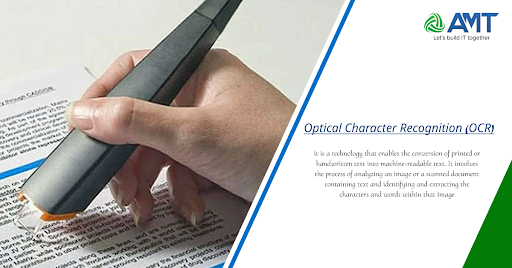Optical Character Recognition (OCR) is a technology that enables the conversion of printed or handwritten text into machine-readable text. It involves the process of analyzing an image or a scanned document containing text and identifying and extracting the characters and words within that image. OCR systems are widely used to digitize printed documents, automate data entry, and enable text searching within images.
Here are the key components and steps involved in OCR:
- Image Acquisition: The process starts with capturing an image of the document using a scanner, camera, or other imaging devices. This image can be in various formats, such as JPEG, PNG, or TIFF.
- Preprocessing: Before OCR can be performed, the captured image often needs preprocessing to enhance the quality and readability of the text. This may involve tasks like image noise reduction, contrast adjustment, and image skew correction.
- Text Detection: OCR systems use algorithms to locate and identify areas of the image that contain text. This step is crucial to isolate the text from other graphical elements in the document.
- Text Segmentation: Once text regions are identified, OCR software needs to segment the text into individual characters, words, or lines. This involves breaking down the continuous text into discrete units for recognition.
- Character Recognition: The core of OCR is character recognition, where the individual characters (letters, numbers, symbols) are identified and converted into machine-readable text. There are various techniques for character recognition, including pattern recognition, neural networks, and machine learning algorithms.
- Word and Language Analysis: After character recognition, OCR software may perform additional processing to analyze the recognized text in the context of the language being used. This helps improve accuracy by checking if the recognized words make sense within the context of the document.
- Postprocessing: OCR results often contain errors or inaccuracies, especially with handwritten text or poor-quality scans. Postprocessing techniques are used to correct and validate the recognized text, which may include spell checking and context-based corrections.
- Output: The final output of an OCR system is the machine-readable text that can be edited, searched, stored digitally, or further processed. This output can be saved in various file formats like plain text, PDF, or Word documents.
OCR technology has a wide range of applications, including:
- Digitizing printed documents and books for archival purposes.
- Automating data entry by extracting information from invoices, forms, and receipts.
- Enabling text searching within scanned documents.
- Making printed materials accessible to visually impaired individuals.
- Enhancing the capabilities of document management systems.
- Facilitating the translation of printed text into other languages.
OCR accuracy can vary depending on factors like the quality of the source document, the clarity of the text, and the language being recognized. Modern OCR systems, especially those powered by machine learning and deep learning techniques, have greatly improved accuracy and can handle a variety of fonts, languages, and writing styles.
